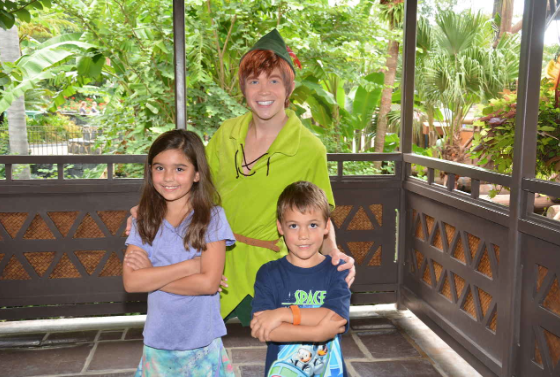We recently took our kids to Disney World. They had a great time meeting Mickey, riding every ride, and watching parades. Although I’ve been to Disney several times before, there is always so much going on that you feel like a first timer each time. During our visit, I thought about the parallels to higher education. Specifically, I wondered what it would be like if higher ed worked like Disney World.

There is a joke one could make about the cost of Disney World and higher education. Yet, I truly believe there are some lessons for colleges and universities in how Disney World operates. At a time when many want to question how and what we do in higher ed, we should think about borrowing great ideas from other industries that help us fulfill our key missions of teaching, research, and service.
There Are People Everywhere
No, I’m not talking about the crowds, but the park employees (or cast members as Disney likes to call them). Everywhere you look there are employees. Some have specific assignments while others are simply available to help and answer questions.
The employees clearly receive an enormous amount of training on their roles and expectations. They constantly greet you and the kids. Moreover, at specific times they play other roles. In the morning when the park opens, cashiers and janitors line the streets waiving to kids and giving people directions.
During my visit, I never heard anyone say that’s not my job so ask someone else. How many times in higher education does a person in one office say call someone else? Rather than helping get the answer, we are too quick to pass someone off because it isn’t our job.
There was a small moment that really struck me. I was standing on Main Street waiting for my family to go to the bathroom (I do this a lot). I noticed a mom trying to get her kid to smile while she took her picture in front of Cinderella’s Castle. A Disney employee saw this and stood behind the mom making funny faces to get the little girl to smile. He then offered to take a picture of the mom and daughter so they could be in a picture together.
It was such a small act, but speaks volumes. He didn’t wait for the mom to ask to take her picture or help her daughter smile. He proactively jumped in to help. If all of us working in higher education took this attitude, I can’t help but think how much it would improve our institutions and student learning.
Details. Details. And more details.
Of course, Disney World seems to obsess over details. The details in the rides are stunning. The same goes for many of the buildings and shows. Actors play their characters and stay in role until out of sight of park visitors. You will never find Mickey walking off stage of a show and taking his costume off where some kid could see him. These details take a tremendous amount of time, resources, and effort to create. In the end, the focus is on the visitor experience.
If we viewed higher education through the student experience, we would have to change much of what we do. Many processes, policies, and procedures simply don’t make sense or aren’t sufficiently transparent to students. I’m not advocating that we give students everything they want either. Disney World doesn’t give visitors exactly what they want, but they do seem to keep the overall experience in mind. For example, when you are waiting to watch the fireworks, you can’t just stand anywhere. There are designated paths for people to continue to walk through the crowd. Surely this is a requirement of the fire marshall. However, they don’t just say you can’t stand there. There are plenty of employees moving people along and offering a suggestion of where to watch as an alternative.
If we looked at our advising practices, our classroom buildings, and our learning management systems with a Disney eye, I suspect we’d need to do a great deal of revision.
Details are important and we don’t look often enough through the eyes of our students on how to best engineer these practices.
On mission and message
Disney World has a clear message. They want to encourage imagination, dreaming, and magic in kids (and adults). This theme is repeated throughout the park. The parades, shows, and even the fireworks all return to this central core message and mission.
We know from organizational theory that a clearly defined mission is important to organizations. Moreover, this mission must be communicated frequently. If we say we want our students to receive a well-rounded education or job training or study abroad, do we push this message throughout all our interactions? Disney does and it works. We should keep a focus on our mission and message to better communicate to all our constituencies.
Conclusion
To be sure, Disney World isn’t perfect. There are many aspects of the visitor experience and some overall themes that need work. Transporting large numbers of people are still a problem for the parks. I don’t want my daughter waiting around for Prince Charming to save her. Yet, Disney World provides an experience like few others. I believe higher education can and should do the same.
Shouldn’t the experience of gaining an education that will provide social and economic benefits for a lifetime at least rival getting to meet a mouse?


Please note: I reserve the right to delete comments that are offensive or off-topic.